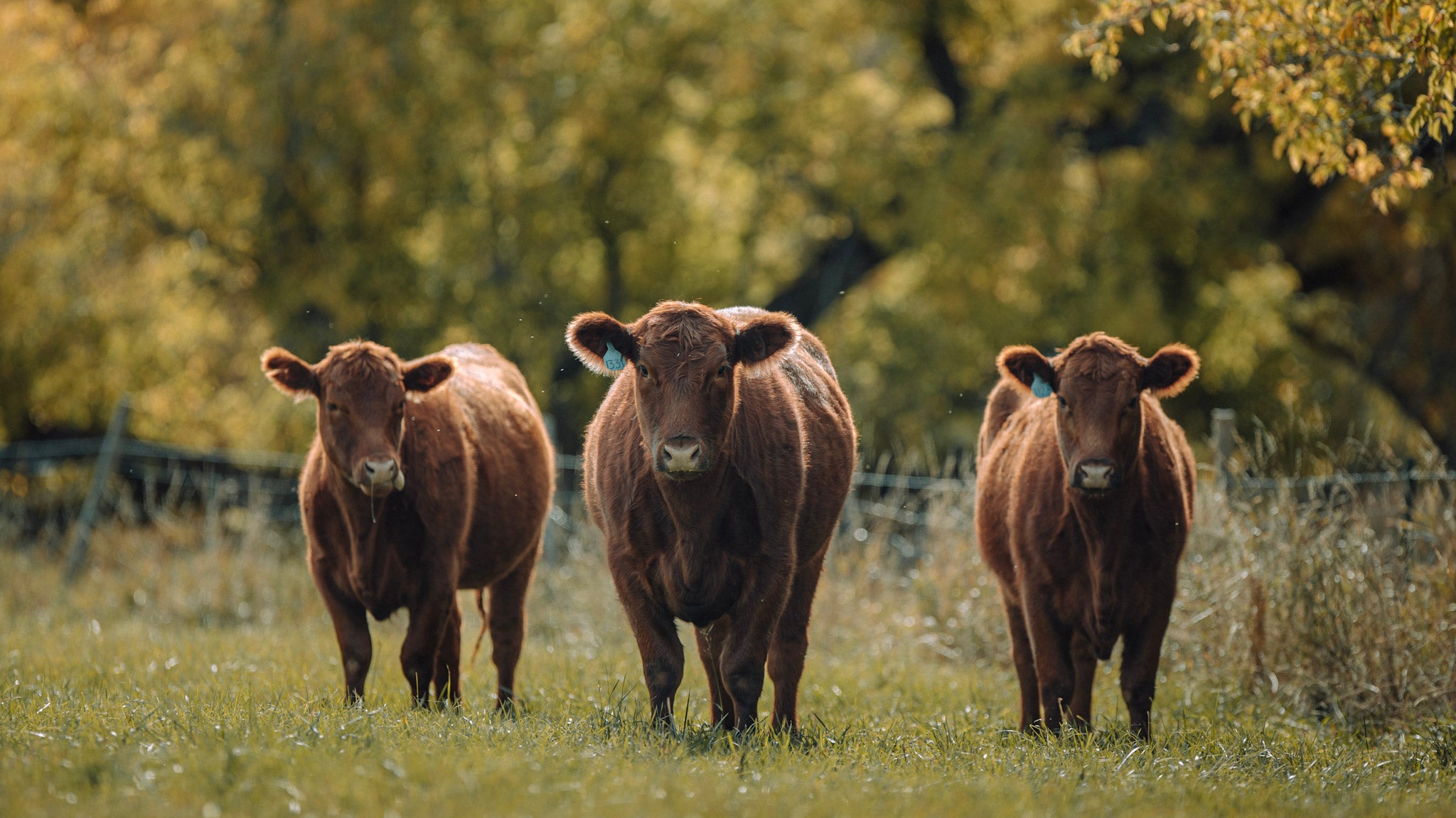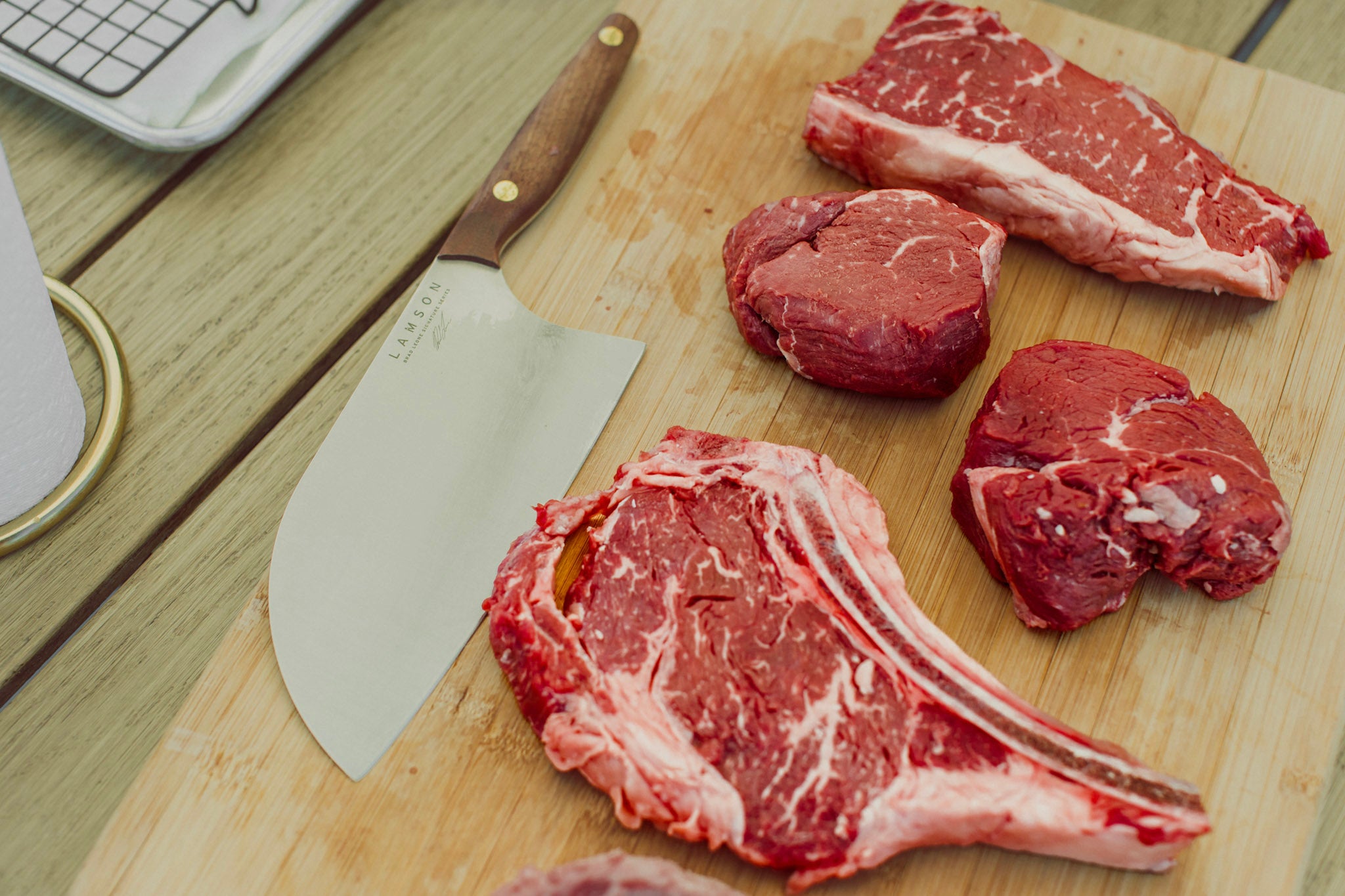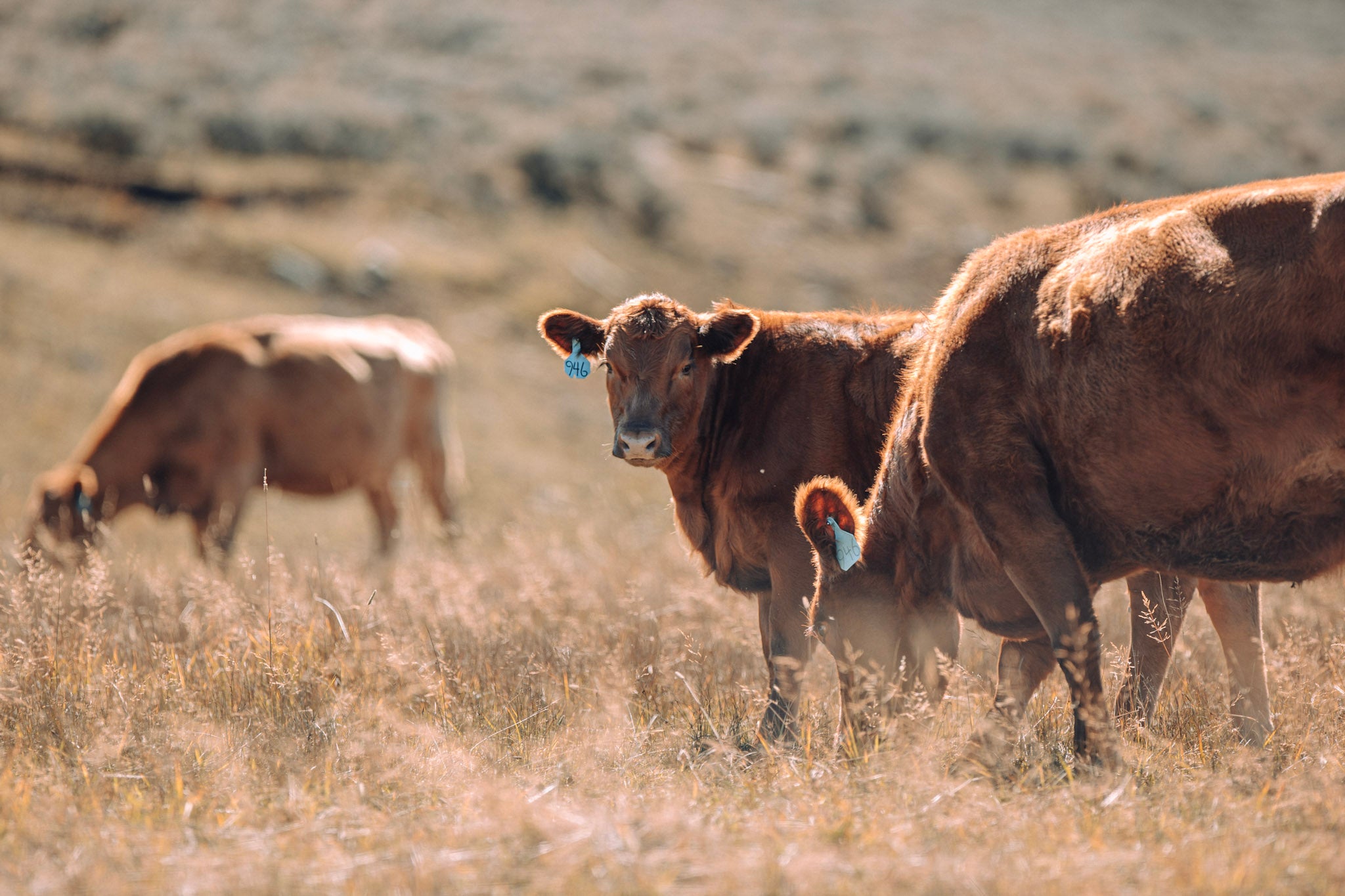
Organic, Grass-fed, or Grain-fed? How to Choose the Right Beef for You Online
When it comes to food, everyone has an opinion. It’s often difficult—and exhausting—to sort fact from fiction. Take healthy eating as an example. You’ve heard all the terms: keto, vegan, GMO, dairy-free, whole foods, secret ingredients . . . to name a small few. With so many things to consider, how does any person decide what to eat?
The beef industry also has terms you’ve likely heard such as organic, grass-fed, and grain-fed. Here’s a comprehensive look at each term to help you order beef online.
Organic. Grass-fed. Grain-fed. What’s the difference? And which is best?
For beef to be truly organic, it must be certified by the USDA (United States Department of Agriculture). The USDA requires beef to meet certain standards.
- The cattle were raised on a blended diet of grain, corn, and/or grass.
- The cattle lived in an environment that accommodated their natural behaviors, meaning they weren’t confined for extended periods of time.
- The cattle did not receive antibiotics and chemicals.
- The cattle were fed 100% organic feed and forage, all free from GMOs and synthetic ingredients.
In summary, organic means the cattle weren’t given food with hormones, antibiotics, or man-made pesticides. The cattle could eat grass or grain and still qualify as organic.
The term “grass-fed” applies to livestock that, at some point, ate grass. It doesn’t necessarily mean the livestock ate only grass. It also doesn’t mean the livestock spent their lives pasture-grazing. So, if factory-farmed cattle ate (mostly) grass, they’re technically grass-fed.
But don’t write off grass-fed beef as a scam. To ensure the cattle ate mostly grass and grazed on open pasture, look for beef certified by the American Grassfed Association (AGA).
The AGA’s certification guarantees:
- The cattle were raised in open grass pastures.
- The cattle were free to graze, not confined in cramped spaces.
- The cattle did not receive antibiotics or growth hormones.
- The cattle were born and raised on family farms in the United States.
If you can’t find AGA-certified beef, look for beef labeled as pasture-fed. “Grass-fed” describes what was eaten while “pasture-fed” describes what was eaten and where it was eaten.
“Grain-fed” applies to livestock with a diet (mostly) consisting of grains and corn. Now there’s a difference between fed and finished, but we’ll dive into that later.
Which is healthier: organic, grass-fed, or grain-fed beef?
Let’s compare organic to nonorganic beef. USDA-certified organic beef meets high standards regarding the cattle’s living conditions and subjection to antibiotics and chemicals. Since it can include grass-fed and grain-fed beef, it isn’t necessarily healthier than nonorganic beef.
Grass-fed beef often meets the USDA’s requirements but hasn’t obtained the organic certification. It can use antibiotics and chemicals for the welfare of the cattle. For example, if an animal is sick, giving it medicine would be a humane and responsible decision. However, the medicine would disqualify the beef from organic certification.
Beef producers face an obvious dilemma, to either prioritize the health of their cattle or do what they can to maintain organic standards and potentially risk losing members of their herd. Yes, eating beef that’s free of antibiotics, growth hormones, and other chemicals is the healthiest choice, but organic doesn’t always mean best. We argue that sourcing (where the beef came from) is more important.
If you order beef online from a producer that outlines their feed program and what is and is not in their beef, you’re more likely to get beef with maximum nutritional benefits.
Moving on to grass-fed versus grain-fed, diet plays a huge role when it comes to the nutritional composition of beef. The saying “you are what you eat” applies to cattle too.
Most commercial cattle (mass-produced beef) spend their adult lives in large feedlots, otherwise known as Concentrated Animal Feeding Operations (CAFOs). The cattle are kept in stalls, usually fattened with grain-based feeds, and given a meager supplement of dried grass. To maximize growth, the cattle often receive antibiotics and growth hormones.
Cattle with a grass-based diet produce beef with more nutritional benefits. Grass-fed beef often contains less total fat than grain-fed beef, which means fewer calories. Grass-fed beef also . . .
- Contains less monounsaturated fat than grain-fed beef.
- Has five times more Omega-3s.
- Offers twice as much Conjugated Linoleic Acid (CLA).
- Contains carotenoid precursors to vitamin A, like beta carotene.
- Is rich in vitamin E and other antioxidants.
Although grass-fed beef has more benefits, both grain and grass-fed beef offer plenty of nutrients such as vitamin B12, B3, and B6. Beef is also rich in iron, selenium, and zinc and contains high-quality protein, creatine, and carnosine. So, regardless of whether you purchase grain or grass-fed, eating beef is a good idea.
We’ve established that grass-fed beef is generally healthier than grain-fed beef and that organic isn’t always healthier than nonorganic beef.
But what is the difference between fed versus finished?
“Fed” describes the cattle’s primary diet while “finished” describes what the cattle ate before slaughter. So, beef may be labeled as grass-fed, but how was it finished?
Finishing isn’t a new concept. Take whiskey for example. After malting, the grain is mashed, fermented, and distilled into whiskey. Then, the whiskey is aged in wooden containers, usually barrels. The wood affects the whiskey’s flavor, aroma, color, and overall experience.
Think of cattle finishing feed as the “wooden barrel” for beef. As cattle eat, they fatten up, and that fat takes on a delicious flavor inspired by the feed.
To yield high-quality beef, cattle need to have the proper ratio of fat to muscle. If cattle are too lean, their meat will lack flavor and tenderness.
Fat does wonders for beef, and finishing feed does wonders for fat.
A large percentage of cattle spend their lives eating grass, making them (technically) grass-fed beef. However, when cattle are shipped to feedlots in the final stages of the beef production process, they’re usually given a grain-based finishing feed. This rich feed allows them to gain the proper amount of fat within a couple of months. So, for the most part, conventional cattle (97% of them) are grass-fed and grain-finished.
Some people opt for grass-finished beef, thinking grain-finished offers less health benefits, which isn’t the case. Grain-based finishing feed has two purposes: (1) to help cattle gain weight and (2) to give the beef a more robust flavor, neither of which grass can do.
Grain does not mean bad for you. It only means rich, buttery beef. To better understand this, look at how finishing feed affects beef quality.
As stated above, fat does wonders for beef, and finishing feed does wonders for fat. The two go hand in hand. Not only does finishing feed promote weight gain, but it gives the fat most of its flavor.
Grass-finished beef tends to be leaner and less flavorful than grain-finished beef. To learn more about feedlots and their role in beef production, check out our blog post, Cattle Feedlots: What Are They and How Do They Work?
When ordering beef online, should I choose organic, grass-fed, or grain-fed?
Although grass-fed beef contains more nutrients, there’s no evidence to prove it’s significantly healthier than grain-fed beef. Really, the choice boils down to preference, considering the beef’s taste, texture, and price point.
Besides nutritional benefits, it’s important to consider sourcing—how the cattle were treated and where they spent their lives. Factory-farmed animals tend to not only live in poor conditions but are more prone to diseases spread from feed pumped with antibiotics. According to Functional Medicine Direction Mark Hyman, MD, “Grass-fed meat is not just better for the environment and better for the animals but better for you too.”
Taking that a step further, numerous studies have proven that pasture-fed cattle offer more nutrients compared to other products.
Here at Lazy T Ranch, we’re passionate about raising healthy cattle the hard way, and producing high-quality, good-for-you beef.
Our meat isn’t organic because we prioritize our animals’ welfare over certification. However, our beef is free from preservatives and added hormones and is given natural feed. We’ve found that pasture-fed, grain-finished cattle yield nutritional beef with an incredible flavor.
Bring our ranch to your table with our beef boxes! Order beef online today!


